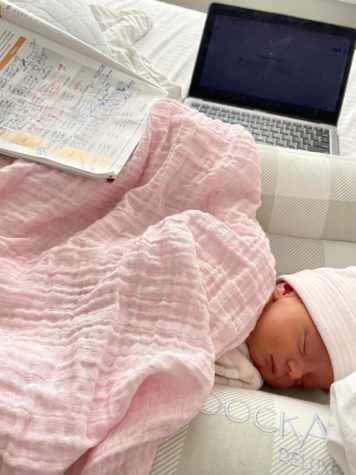Why is parental leave still gendered?
November 9, 2022

According to the United Nations [UN], for every dollar a man earns, a woman earns 77 cents. Gender inequality within the workplace has many causes, some of which are societal norms such as women’s longer maternity leave.
Currently at LFA, new mothers on faculty get roughly 3 months of maternity leave, while new fathers have a 5 day informal leave of absence. This discrepancy is on par with most of American society. According to the US Department of Labor, the average length of maternity leave for women is 34 days, and the average length of paternity leave for men 21 days.
While on leave, fewer women than men will receive full pay (32% of women versus 55% of men), and a greater percentage receive no pay (41% of women versus 25% of men). These differences are not exclusively due to women’s longer leaves.
The perception of a woman in the workplace by their employers or fellow coworkers can often be altered after taking this maternity leave. Coworkers or bosses sometimes view these women as less committed to their jobs. According to Harvard Business Review, after taking maternity leave, women are less likely to be promoted, move into management, or receive a pay raise. These women are also at a greater risk of being fired or demoted.
Some employers actively avoid hiring pregnant women, or women whom they believe will be, to avoid paying for maternity leave. According to the Equality and Human Rights Commission, 41% of employers believe that pregnancy in the workplace places “an unnecessary cost burden” on the workplace, and 40% of employers believe that new mothers are “generally less interested in career progression.”
Women and men face vastly different societal expectations regarding child care as women are generally expected to forefront raising a child. These unequal expectations can result in praise for men for completing simple childcare tasks that women are expected to do. For example, Yue Chen, Global Department chair and mother of a 17 month-old boy, typically has dinner and feeds her son at Student Union. One day, Chen’s husband Isaias Cairampoma, a Spanish teacher at LFA, was feeding their son instead. Later on, a colleague reached out to Chen describing the ‘golden heart’ they witnessed within Cairampona. Chen states that she typically feeds her son at dinner; yet, she’s never received comparable feedback.
The current system in most American institutions is highly gendered with the expectation that a child is cared for by a heterosexual couple. Same-sex male couples receive less paid parental leave when compared to different-sex couples.
Some advocate for an equal paid parental leave for parents to help address some of these issues. In Finland, Prime Minister Sanna Marin recently eliminated previously gendered-based leave by announcing a new parental policy reform that will grant nearly 7 months of paid leave to each parent, only 69 days can be transferred to the other parent.
Parental leave’s negative effects can foster an environment that can alienate new mothers, and the current unequal parental leave encourages the notion that women are more in charge of child care. Addressing this specific issue can lead to greater equality in the workplace and society at large by encouraging men’s active participation in child rearing.














